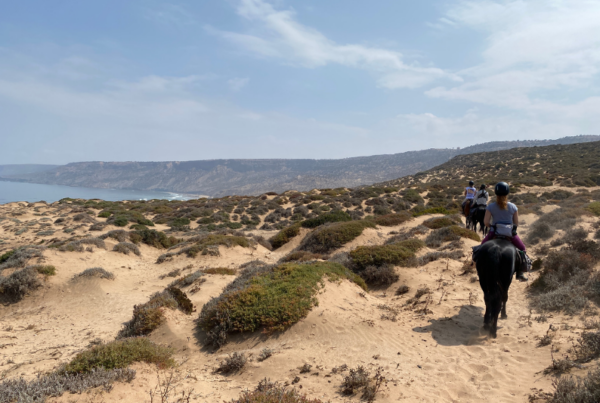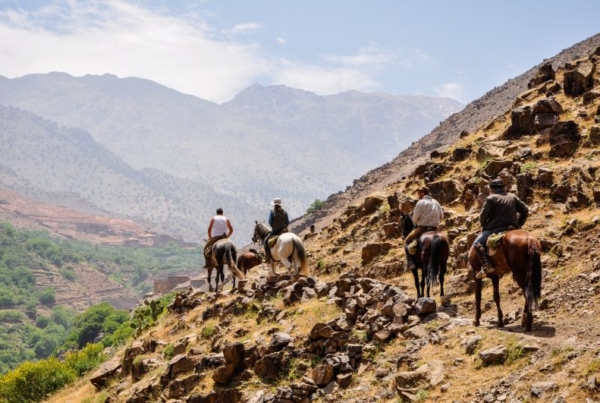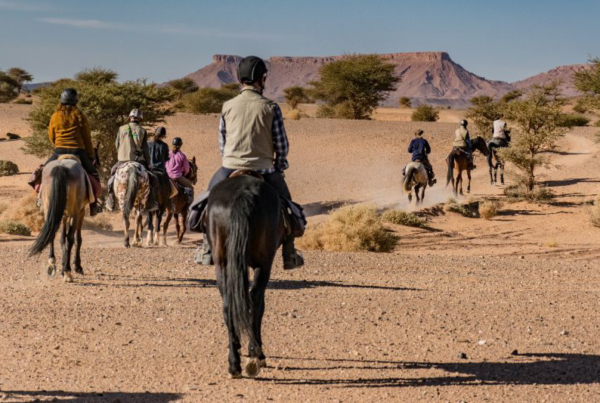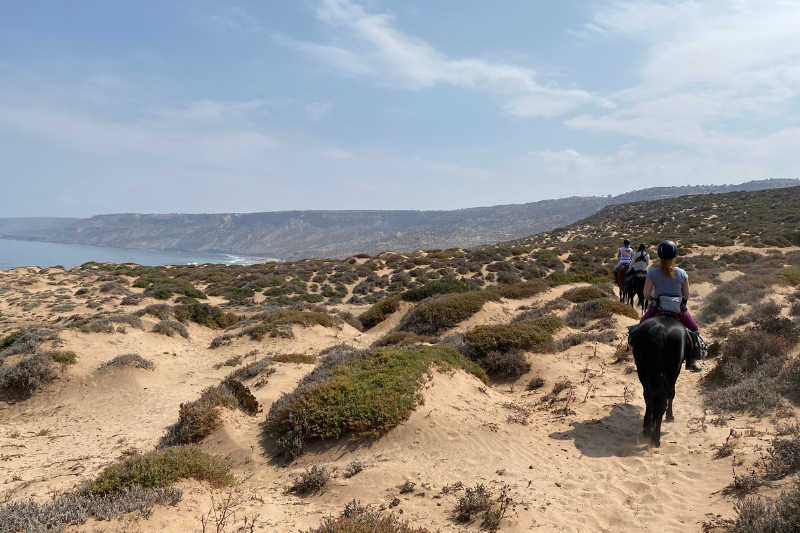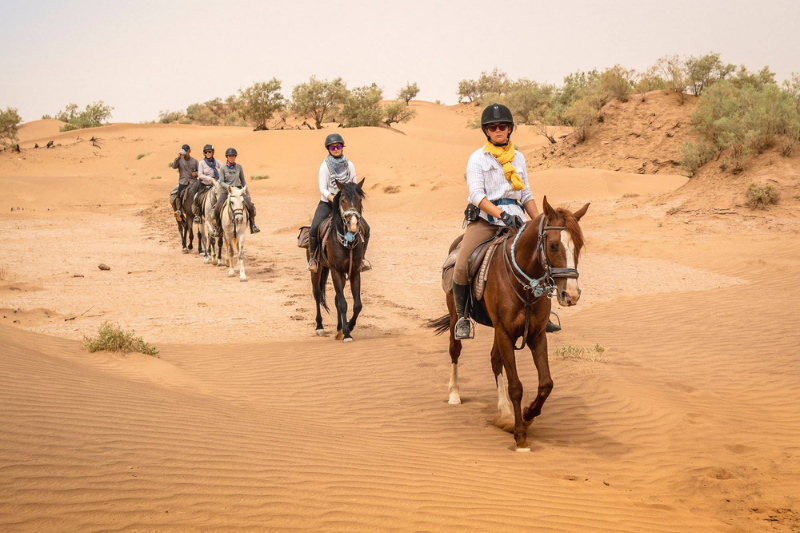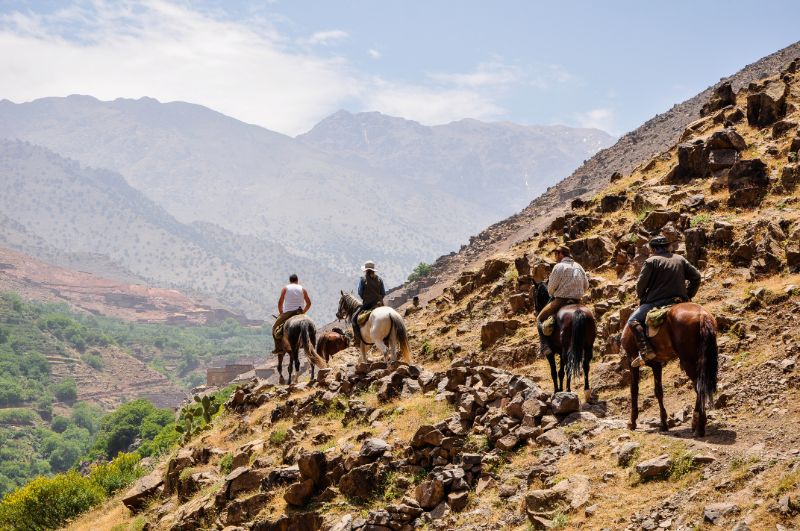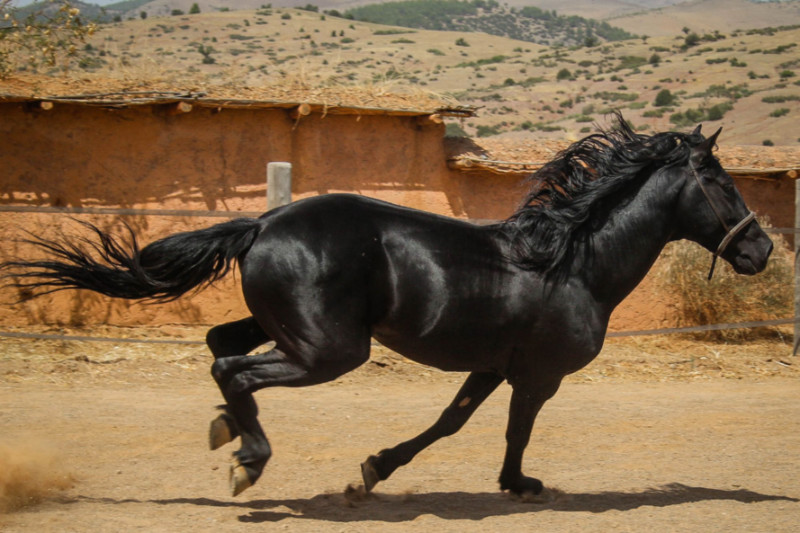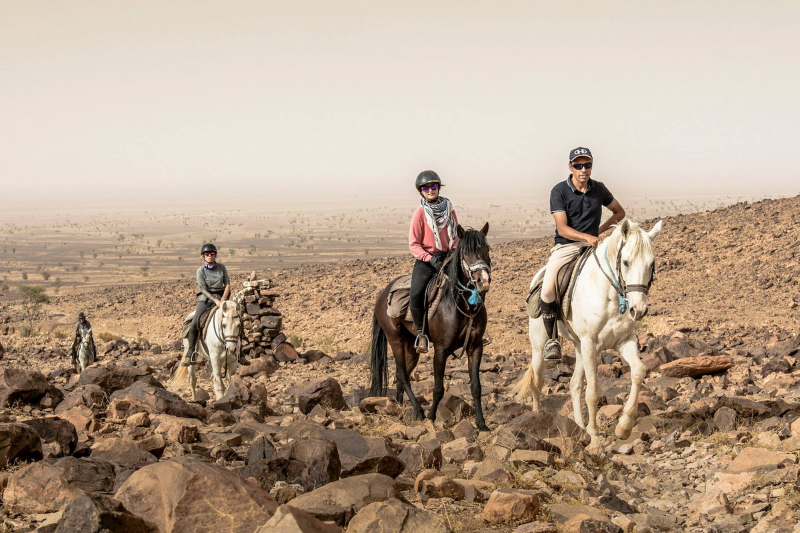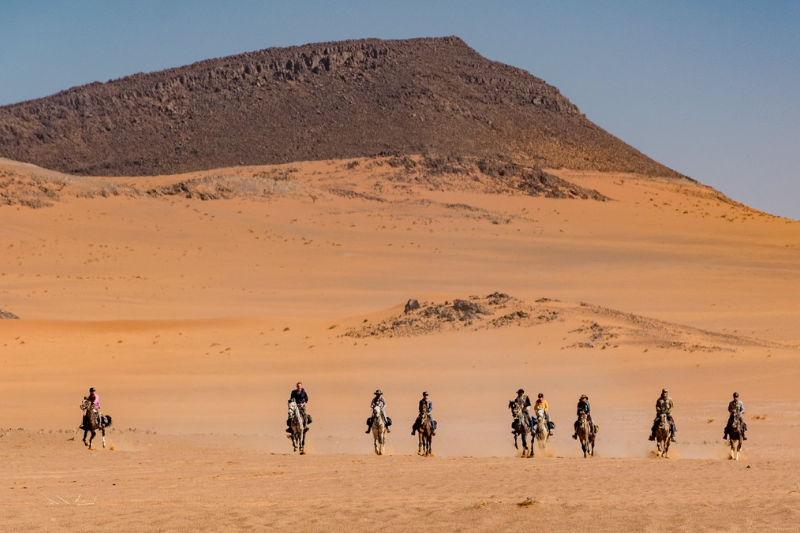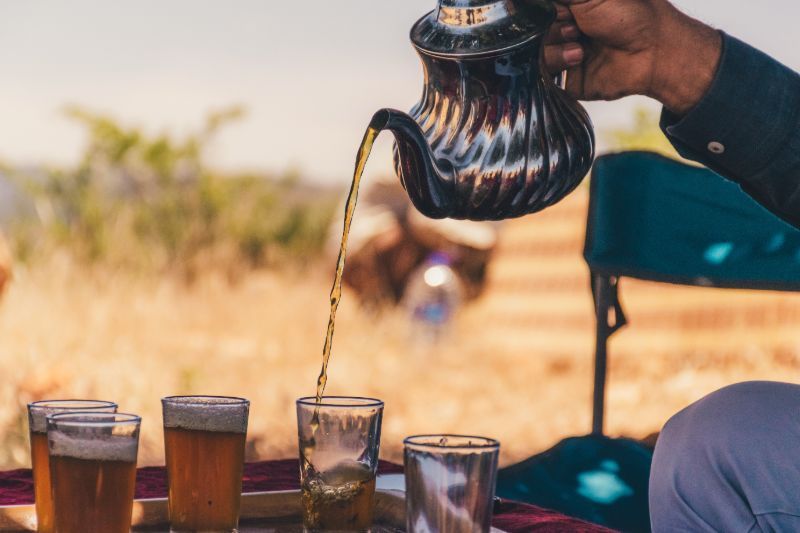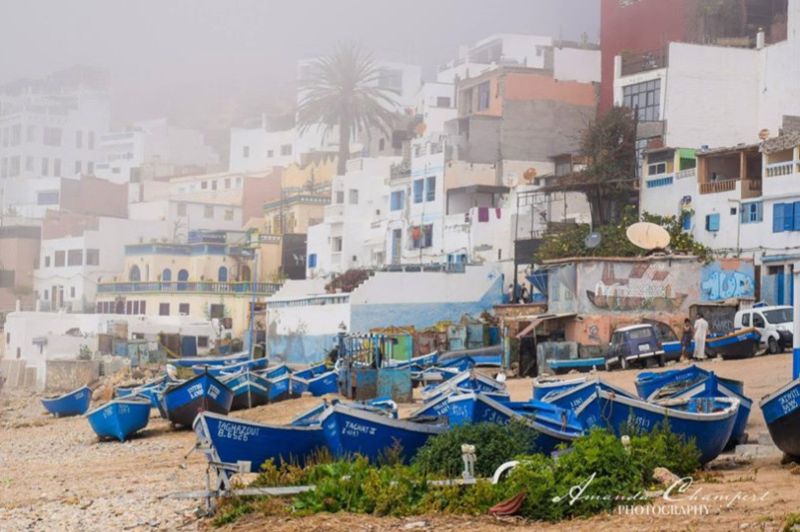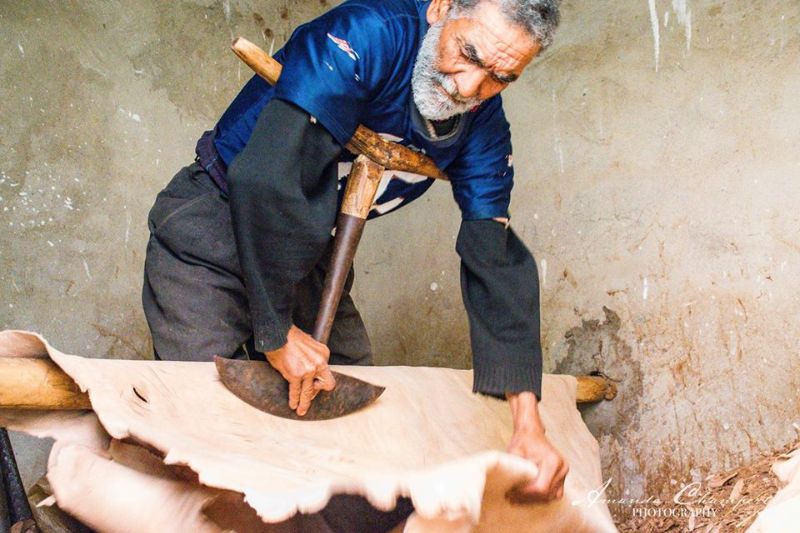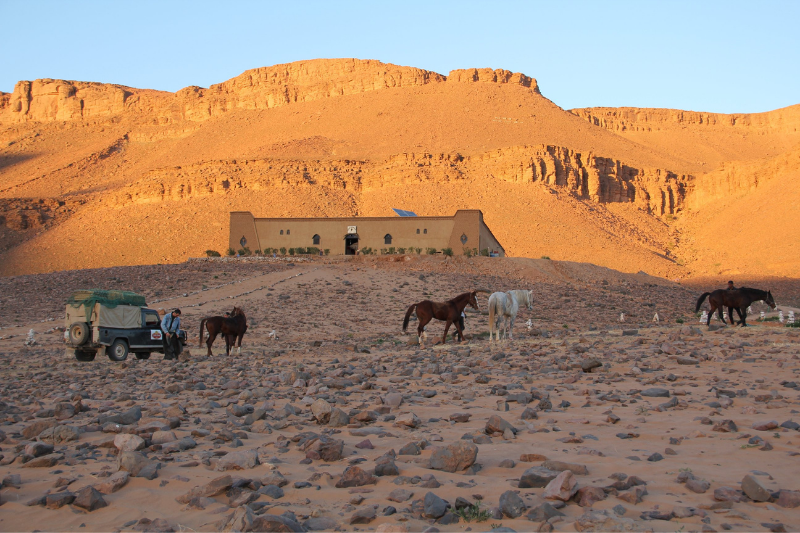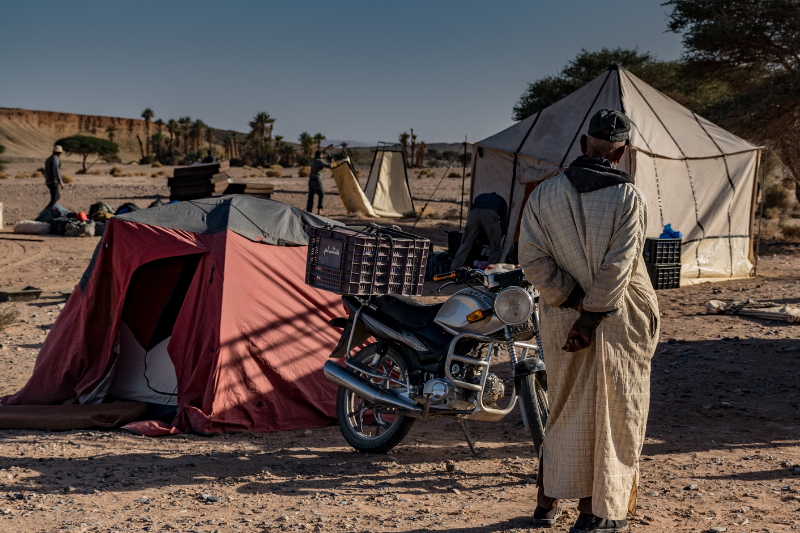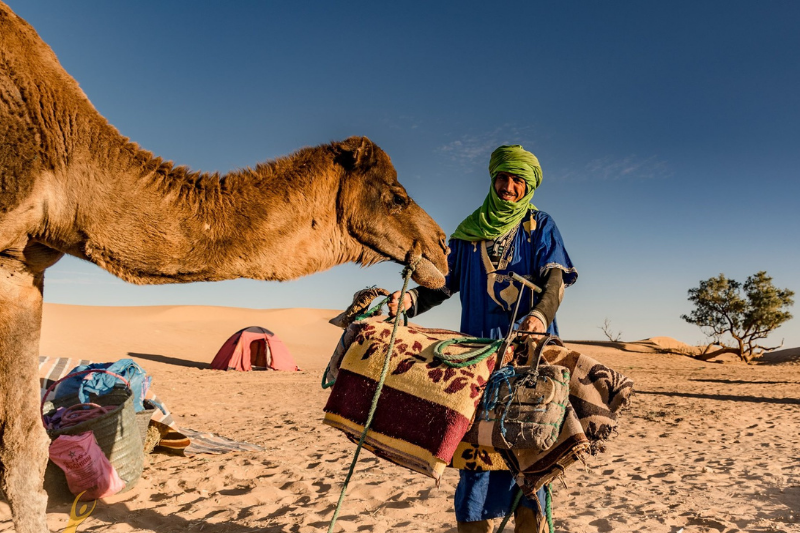Riding in Morocco offers a true horseback adventure through iconic desert scenery and thrilling canters across vast empty landscapes on the back of true desert stallions.
Our horse riding holidays in Morocco offer trails through various landscapes. Adventure through the world-famous Sahara deserts to discover date palm oases and the Berber communities that live there. Journey through the stunning, and sometimes even snow-capped, Atlas Mountains or gallop down the smooth white beaches and rugged coastline of Essaouira.
Enjoy horse riding in Morocco during any season. This year-round destination particularly comes into its own for those looking to escape for some winter sun! Morocco is easily accessible, and whilst being only a stone’s throw away from Europe, offers a vastly different and rich cultural experience. You can easily extend your trail ride to include a few days of experiencing the incredible city of Marrakesh and all it has to offer. We welcome all types of travellers, from single riders, couples, families, or groups of friends – as long as you have a sense of adventure, there is a ride for you!
